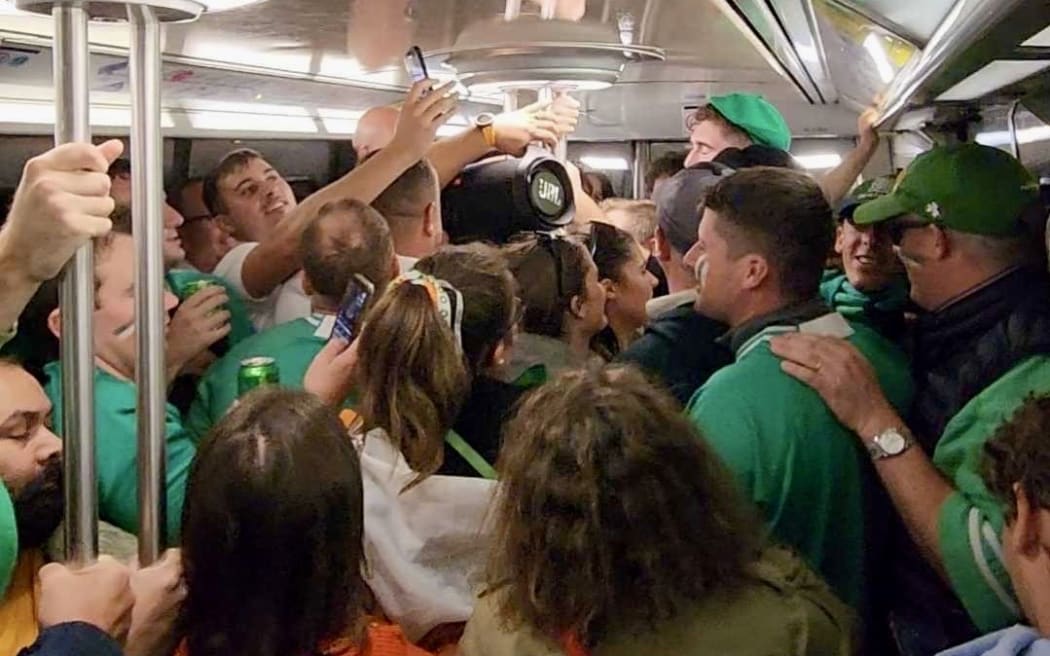
A crowded Paris metro before the All Blacks v Ireland Rugby World Cup match on 14 October 2023. Photo: RNZ / Jogai Bhatt
First Person - Public. Transport. The two little words powerful enough to invoke the rage of a thousand riders.
From lengthy delays and last-minute cancellations to fares that almost make you consider giving an arm and a leg for CBD parking, Aucklanders aren't shy about sharing their thoughts on the state of buses and trains in Tāmaki Makaurau.
And it's made even more apparent when we travel overseas. Just ask your mate who moved to Melbourne and can't stop raving about the free tram zone.
In many parts of the world, public transport is a cheap, quick and easy way to navigate a new place. And thankfully enough, that's the case in Paris too.
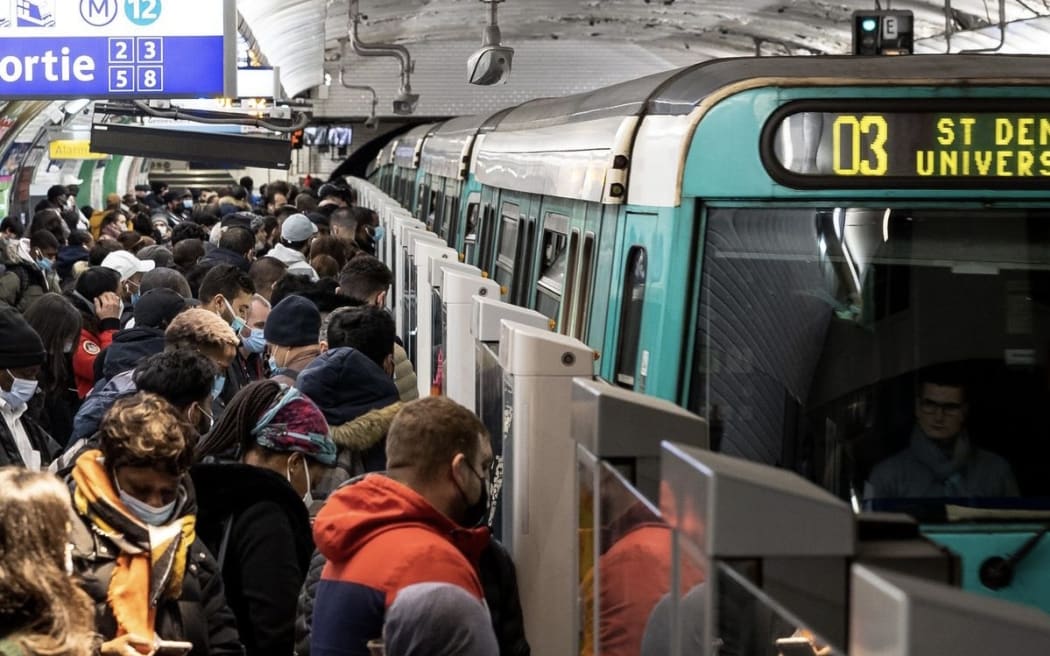
A crowded Paris metro before the All Blacks v Ireland Rugby World Cup match on 14 October 2023. Photo: RNZ / Jogai Bhatt
The Paris metro system has an impressive 380 stations around the city, with train lines running from 5.30am till 2am at a frequency of every three to five minutes. It's efficient, affordable and has been voted one of the best public transport systems in the world.
But the system was put to the test in October as 79,000 fans flooded the metros for a chance to see all the Rugby World Cup action at Stade de France.
Much like the fans, we've also relied heavily on the metro system to get us where we needed to be while covering the knock-out stages of the tournament. This worked well for us during weekdays, but as the quarters and semi-final weekends rolled around, it was an entirely different story.
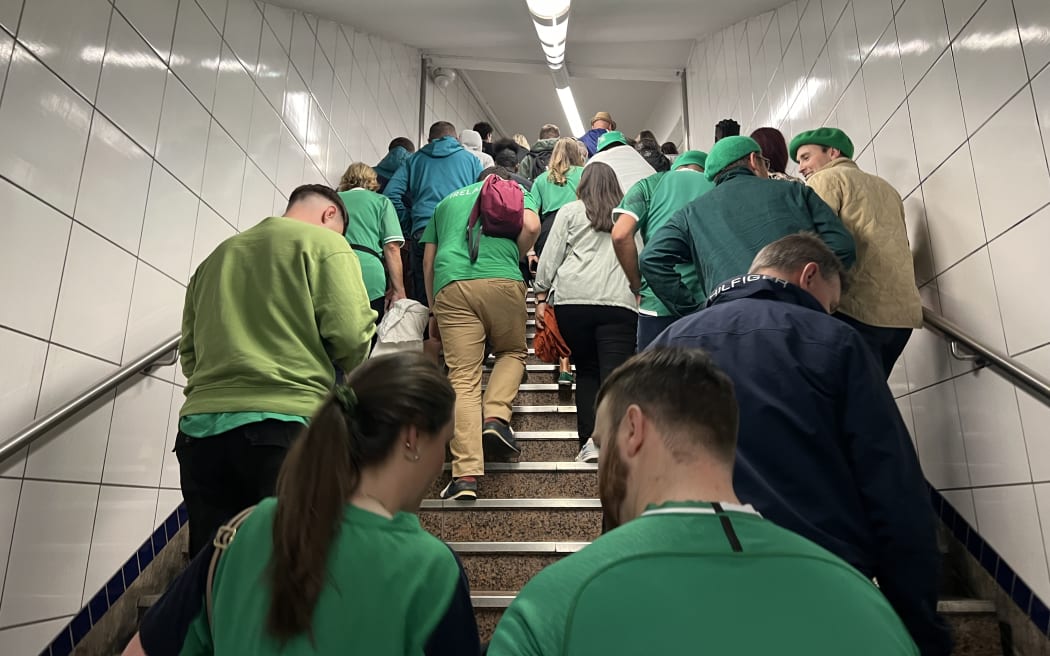
A crowded Paris metro before the All Blacks v Ireland Rugby World Cup match on 14 October 2023. Photo: RNZ / Jogai Bhatt
On 14 October, Paris was flooded with green jerseys as the Irish descended upon the city seemingly all at once, ready to vocalise their support and make their presence known to a more timid All Blacks crowd.
As we hopped on the metro that day from La Motte Picquet Grenelle, we were surprised at how quiet it was. Empty seats and no jerseys in sight. But the false sense of calm was soon shattered as we pulled up to our next stop in Invalides.
Outside the window was a sea of green. The doors opened and a rollicking crowd poured into the carriage in what seemed like a never-ending stream. Each stop along the way only picked up more fans, desperately squeezing their way onto the train. There was barely room to breathe, but the fans didn't seem to mind. They were pumped for the clash ahead and even broke out in song.
Although the ride was a slightly uncomfortable experience, it was nowhere near as terrible as the metro home after the game.
Tiffany Salmond
The waiting platforms were jam-packed with people shoulder-to-shoulder waiting for the next train to pull up. As it did, the crowd pushed those in front into the train and filled the carriage until it was at capacity ... and then continued filling it some more.
I was flat up against the person in front of me while also having someone up against my back from behind. I couldn't move and people were still trying to push onto the train. Someone near the door was causing it to open and reopen as they were triggering the sensor and others began yelling and fighting with them to get off.
I had to look up at the roof of the train to distract myself to help me remain calm. Anyone with even a minor sense of claustrophobia would have struggled. It was a health and safety risk having people so tightly squeezed in, with no officials to monitor the numbers.
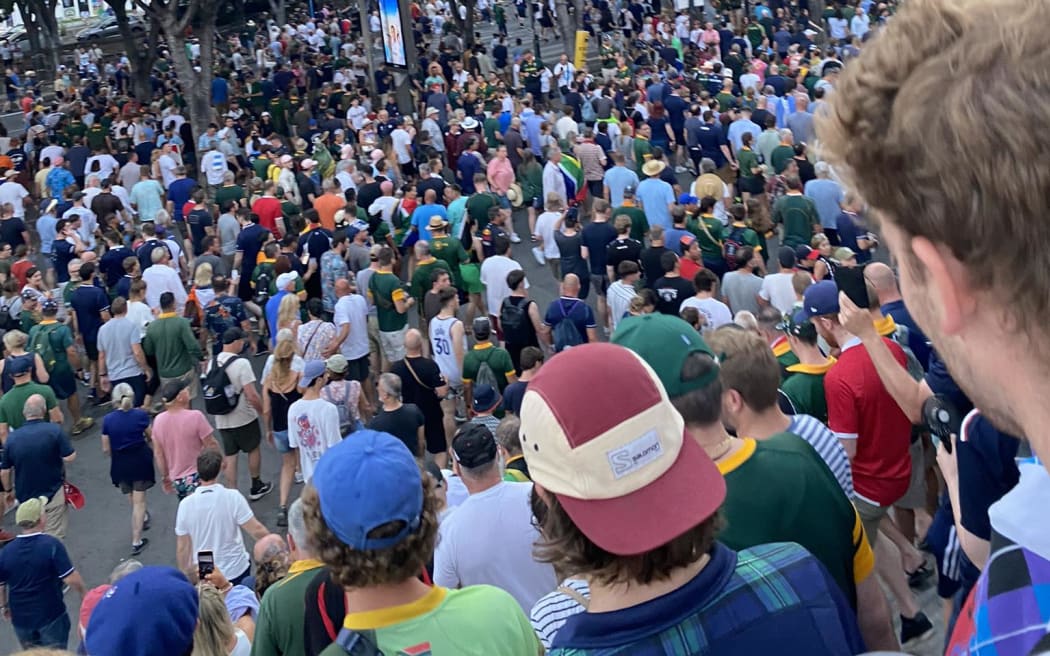
Fans leaving Stade de Marseille after the Rugby World Cup match between Scotland and South Africa. Photo: Supplied / Shannon White
Jogai Bhatt
I was surprised the trains didn't break down to be honest.
I can't imagine how much weight the carriages can safely carry, but it would've been pushed to the brink.
Having almost 80,000 people rush to the trains and get stuck in a bottleneck on the walk up to the stadium itself had us stranded in a stagnant crowd for close to 30 minutes. RNZ sports journalist Jamie Wall had given us some sound advice before we arrived in Paris - "get to the stadium way earlier than you think you need to". And he was right. The journeys to and from Stade de France might've taken two hours each way.
On the night of the All Blacks vs Argentina semi-final, we ambitiously tried to grab content from two spots before hitting the stadium, and only managed to arrive 30 minutes before kick-off.
But a part of me has strangely savoured the experience of the Paris metro.
With lawless fans mooing as trains approached, ready to be herded like cattle back in the barn. With drunk lads, who might have otherwise tumbled over, nestled between strangers. And with rowdy fans, cramped up in a tight space but happy as ever for the chance to witness sporting glory in France.
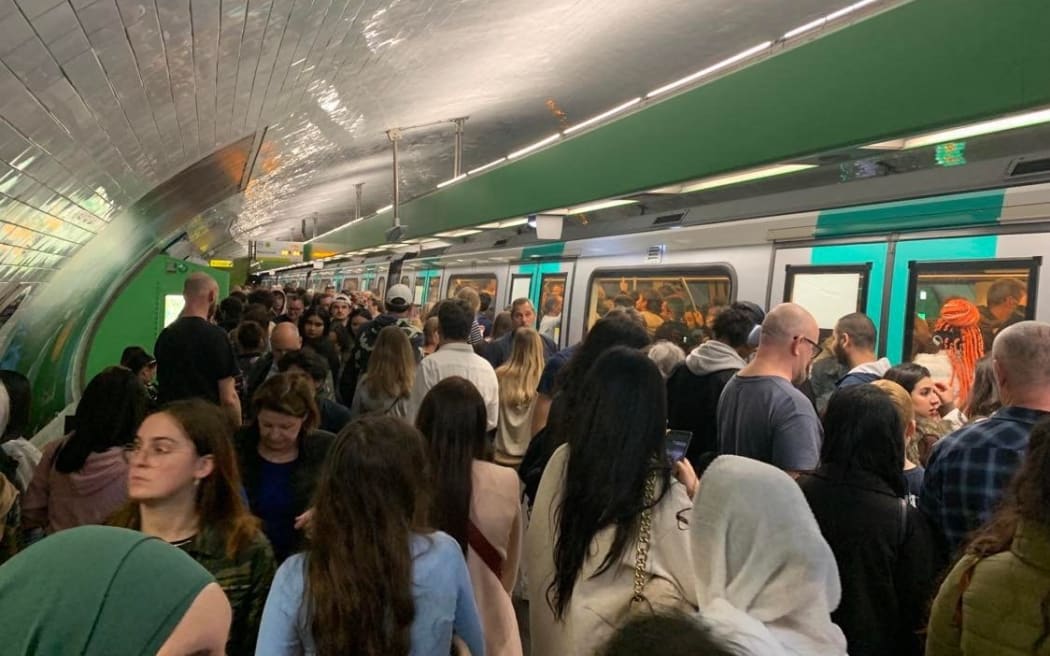
A crowded Paris metro before the All Blacks v Ireland Rugby World Cup match on 14 October 2023. Photo: RNZ / Jogai Bhatt





